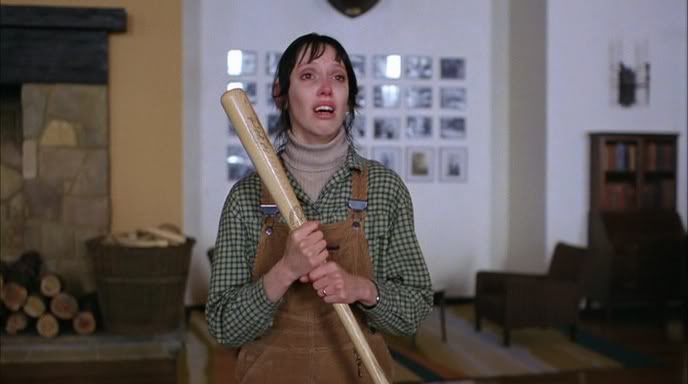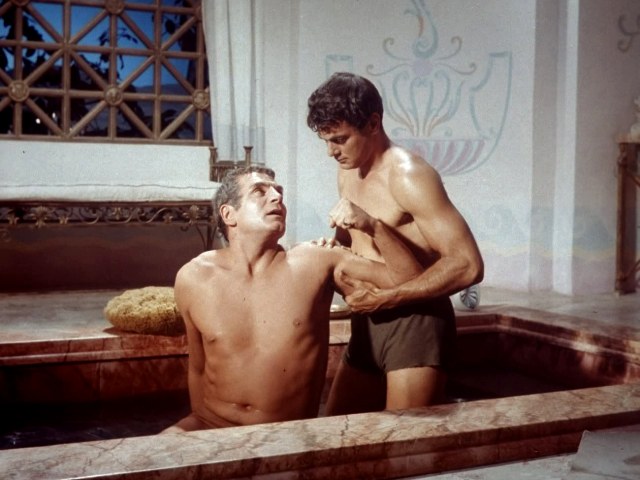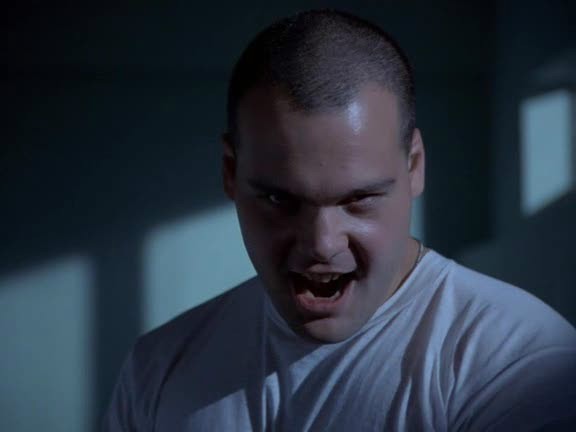6. Snappy dialogue delivery

Most people know the stories of Kubrick’s intense demands on set. Shelley Duvall recalled being forced to do 127 retakes of the scene where she hits Jack Nicholson with a baseball bat. Kubrick demanded nothing less of perfection, and his love of film certainly far outweighed his love, or even respect, for his talent.
In this demanding atmosphere, though, Kubrick managed to wring out some of the best dialogue delivery of an actors. Of course, half the battle is the actor (the best director can’t make the worst actor or actress deliver lines like Daniel Day-Lewis) and the talent they bring, but directors have a very specific vision of the film and the characters.
Kubrick’s dialogue always has a certain atmosphere to it that at times sounded like the crack of a whip. It would ebb and flow with the narrative, breath when it needed breath.
In Lolita, there are some great examples of this, especially between Lolita and Humbert. When they fight, the dialogue is quick and sharp. When they are playful, it’s light and fluffy.
The Shining has, perhaps, some of the sharp dialogue in Kubrick’s filmography, though. Between Jack’s cold, sharp delivery with Wendy, and Wendy’s frantic, terrified bursts of emotion, tied together with Danny’s creepy, purposefully drawn out delivery, really sells the atmosphere of the film. It adds immediacy to the situation.
7. The “Kubrick Stare”
The “Kubrick Stare” as it’s been dubbed is perhaps one of the most visually unnerving camera compositions in cinematic history. It’s a relatively simple shot – a tight close up, with the camera either at eye level or slightly above eye level. The actor only looks up with their eyes. And yet, this incredibly simple shot is also incredibly powerful.
Kubrick used it everywhere (hence the name). Private Pyle in Full Metal Jacket has the stare when he’s in the bathroom. Alex has this stare at the beginning of A Clockwork Orange. Jack has this stare when looking out the window in The Shining. Nicole Kidman has this stare in Eyes Wide Shut as she peers over her glasses.
There’s something particularly unnerving about this specific composition, and yet it’s impossible to put a finger on exactly what it is. However, whenever Kubrick used the stare, it generally wasn’t to evoke happiness or comfort.
8. Pivotal scenes take place in bathrooms

Bathrooms are generally a place where people feel most comfortable. Studies have been done on why people sing in the shower, and the conclusion is a combination of the acoustics in the bathroom, and the safety one feels while in the shower. Many people claim to make important decisions while in the bathroom. It’s a place of solace, and it’s a place where we are at our most vulnerable.
In Kubrick’s mind, bathrooms were where pivotal moments happened. In Full Metal Jacket, Private Pyle makes his fatal decisions while sitting on a toilet. In Lolita, Humbert is seen writing in his secret diary while in the bathroom. Alex accidentally gives his identity away while taking a bath in A Clockwork Orange.
In Barry Lyndon, Barry’s one true expression of love to his wife takes place while she is in the bath. In The Shining, Room 237’s bathroom has not only a pivotal scene, but also one of the most grotesque uses of imagery imaginable. This is not counting the scene between Jack and Grady that kick-starts the climax of the film.
Clearly Kubrick had some preoccupations with bathrooms. Perhaps it has to do with the aforementioned vulnerability – after all, all of the characters above are in vulnerable states before their moment – but there likely will never be a concrete answer to that question.
9. Close ups on faces in pivotal moments

This may seem rather straightforward. The close-up was “invented” (though that word is likely not the right one to use in this context) by Griffith in 1915 in The Birth of a Nation. Now it is one of the basic tenants of filmmaking. Knowing how and when to use a close up is as important as anything else.
Kubrick made a point to use close-ups on faces in extremely pivotal moments, though. In Full Metal Jacket, Private Pyle’s menacing expression fills the frame. The same goes for Jack Torrance and the members of the ritual in Eyes Wide Shut. In Lolita, there is a close up of a face on a painting with a bullet hole in it.
Not only do close-ups capture the atmosphere and mood of the scene, Kubrick uses them to make his audience uncomfortable. Generally when close-ups are being used, the “Kubrick Stare” is also in full effect. The combination of the eerie stare, along with the enlarged image, creates an incredibly suspenseful and unnerving mood for the film and the viewer.
10. Odd usages of zoom
A lot of film students are taught, in beginning classes, to avoid the zoom like plague. It’s an unnatural camera movement in the sense that – if we’re relating cameras to human eyes – eyes cannot “zoom.” Humans can enlarge an image by moving their face closer to the object in question, but humans cannot mechanically enhance an image without moving their head.
Zooms are jarring in this sense, then, because it defies what the viewer understands (though, admittedly, it was more jarring when it was first being employed than it is now). Kubrick used zooms to throw off his audience.
Generally these zooms are used to close in on a single object or person in frame from a wide shot, or to expand the frame by moving away from a single object or person. Sometimes it can be a slow zoom, like the ones in Full Metal Jacket. The soldiers are training, and the camera slowly zooms out to reveal the expanse of the training area.
Barry Lyndon is also an excellent example of this, where the frame begins with a tight close up of two guns, and slowly pulls out to reveal the characters in question cleaning their guns in the middle of a forest.
Moreover, in The Shining, there is a sudden zoom in on Danny Torrance. When he first sees the twins, the frame suddenly changes from a wide shot of Danny playing darts to a very tight close up of him looking at the twins.